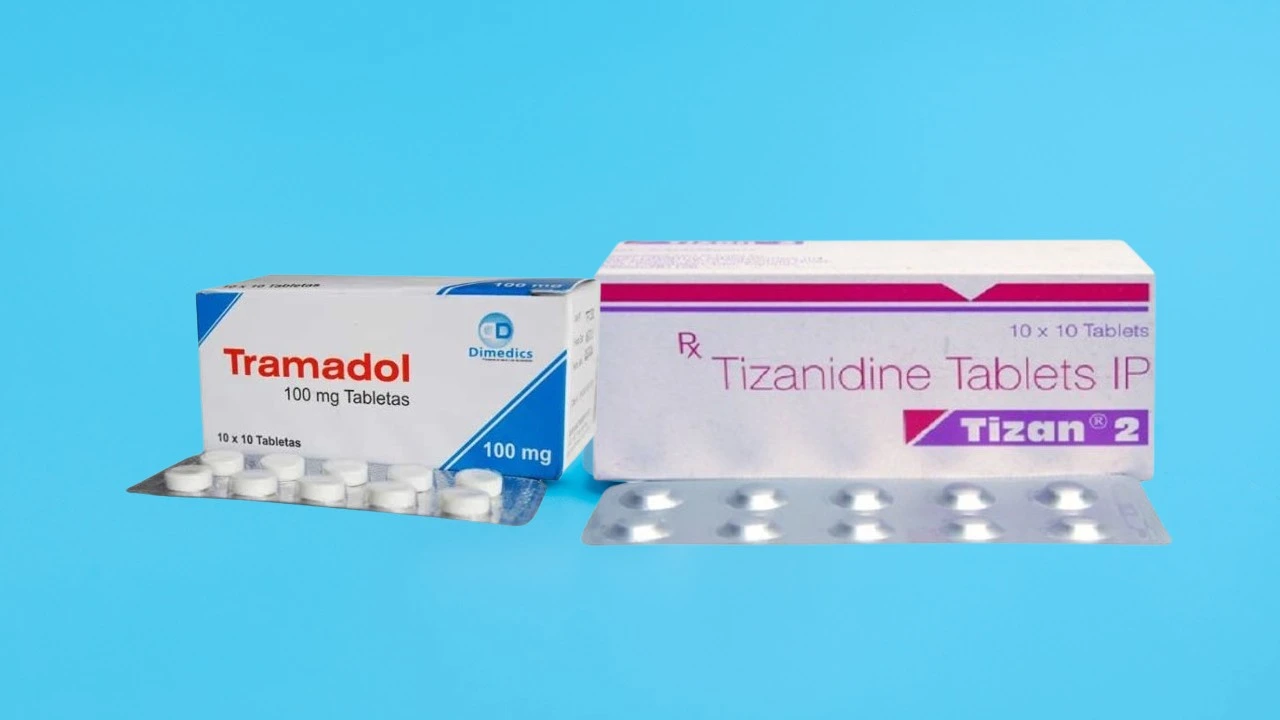Tizanidine and tramadol are two drugs with distinct mechanisms of action and medicinal benefits. However, before considering this combination, it is crucial to understand the individual properties of each medication and their potential interactions.
Tizanidine: A Muscle Relaxant with Medicinal Benefits
Tizanidine is a centrally acting alpha-2 adrenergic agonist primarily used as a muscle relaxant. It works by reducing spasticity and muscle tension, making it particularly beneficial for conditions such as multiple sclerosis, spinal cord injuries, and other disorders characterized by increased muscle tone or spasms.
In addition to its muscle relaxant properties, tizanidine use has also shown potential benefits in managing certain types of pain, particularly musculoskeletal pain and pain associated with muscle spasms. It can be an effective adjunct therapy for pain management when used in combination with other analgesics.
Tramadol: A Unique Opioid Analgesic:
Tramadol is a synthetic opioid analgesic that has a unique mechanism of action. Unlike traditional opioids, tramadol not only binds to opioid receptors but also inhibits the reuptake of neurotransmitters like serotonin and norepinephrine. This dual action contributes to its pain-relieving properties while potentially reducing the risk of some opioid-related side effects.
Tramadol use is widely recognized for its effectiveness in managing moderate to severe pain, including neuropathic pain, musculoskeletal pain, and post-operative pain. It is often prescribed as a second-line analgesic option when other non-opioid pain relievers are ineffective or contraindicated.
Potential Synergistic Effects:
The combination of tizanidine and tramadol has gained attention due to their potential synergistic effects in pain management. Tizanidine’s muscle relaxant properties can help alleviate muscle spasms and tension, while tramadol’s analgesic effects can provide pain relief.
By combining these two medications, patients may experience enhanced pain relief and improved quality of life. Tramadol’s opioid activity can be complemented by tizanidine’s ability to reduce muscle spasticity, potentially leading to better management of pain associated with musculoskeletal conditions and neuropathic pain.
Considerations and Precautions:
While the combination of tizanidine and tramadol may offer potential benefits, it is essential to exercise caution and carefully consider individual patient factors. Both medications can cause sedation and drowsiness, and their combined use may increase the risk of these side effects.
Additionally, tramadol may interact with certain medications that affect serotonin levels, potentially increasing the risk of serotonin syndrome, a potentially life-threatening condition. Healthcare providers must carefully review a patient’s medication list and medical history before prescribing this combination.
It is also crucial to monitor patients closely for signs of adverse reactions, such as respiratory depression, dizziness, or cognitive impairment. Dosage adjustments or alternative treatment options may be necessary for individuals with specific risk factors or contraindications.
Tizanidine and Tramadol Comparison:
| Characteristic | Tizanidine | Tramadol |
| Primary Use | Muscle relaxant | Analgesic for moderate to severe pain |
| Mechanism of Action | Alpha-2 adrenergic agonist | Binds to opioid receptors and inhibits neurotransmitter reuptake |
| Potential Benefits | Reduces muscle spasticity and tension, may help manage certain types of pain | Pain relief, including neuropathic and musculoskeletal pain |
| Potential Side Effects | Sedation, dizziness, dry mouth | Nausea, constipation, dizziness, serotonin syndrome |
| Considerations | May cause sedation and drowsiness when combined with tramadol | Potential for drug interactions and serotonin syndrome |
| Where to Purchase Online | buyingtramadol.com | Out of Stock |
Conclusion:
The combination of tizanidine and tramadol presents an intriguing option for pain management, offering potential synergistic effects by targeting different aspects of pain and muscle spasticity. While tizanidine use can help reduce muscle tension and spasms, tramadol use can provide analgesic relief through its unique mechanism of action.
However, it is crucial to carefully consider individual patient factors, potential drug interactions, and the risk of adverse effects when prescribing this combination. Open communication with patients, adherence to dosage instructions, and regular monitoring are essential for ensuring safe and effective pain management.
Healthcare providers should weigh the potential benefits against the risks and consider alternative treatment options when necessary. By taking a comprehensive approach and tailoring the treatment plan to each patient’s unique needs, the combination of tizanidine and tramadol may offer a valuable option for those seeking relief from pain and muscle spasticity.

